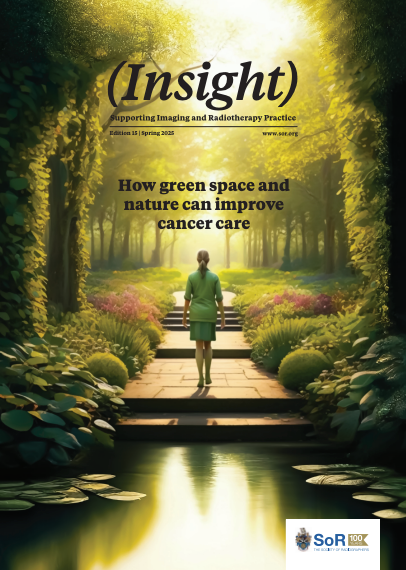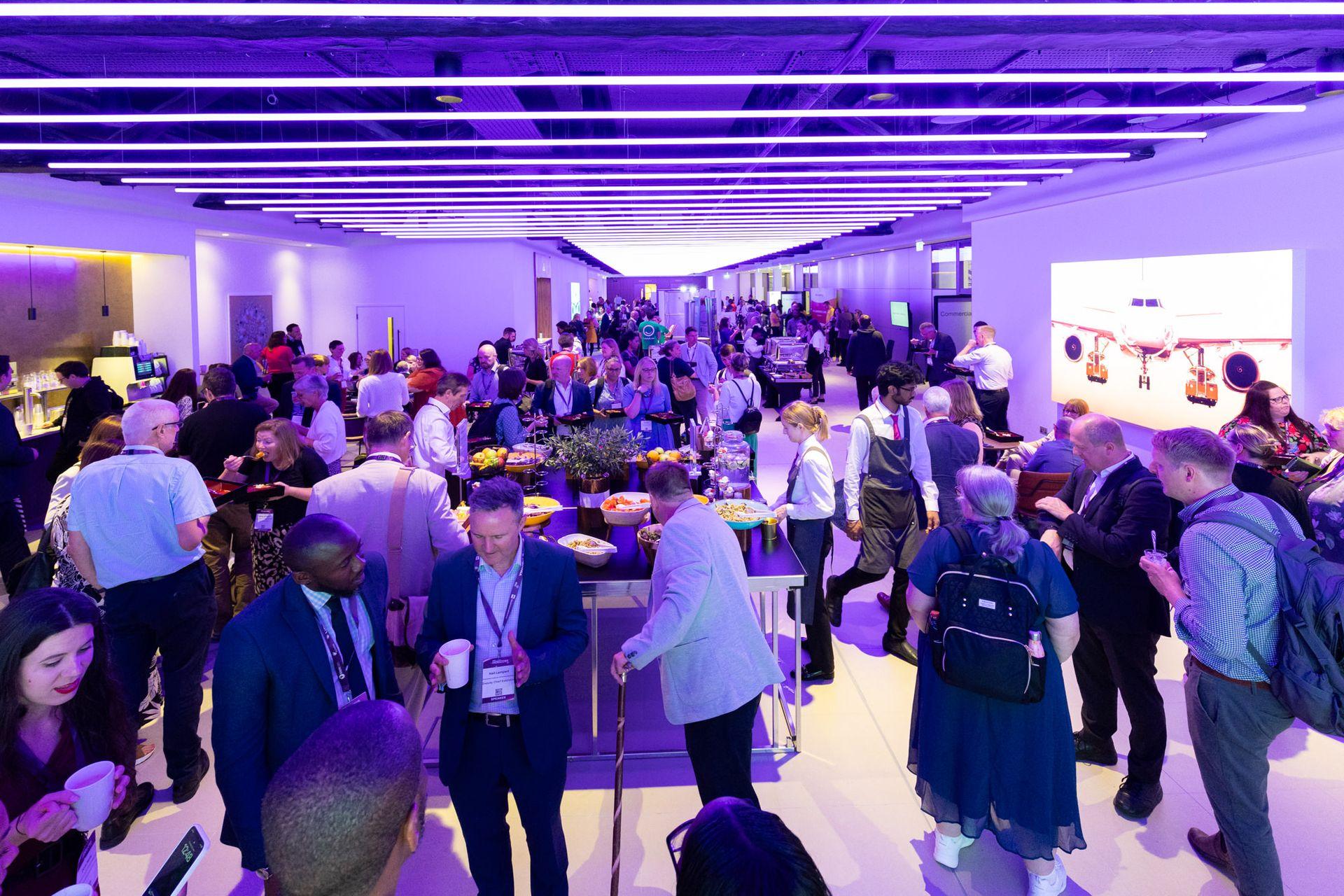Just a few short years ago, talk of AI was still in the realm of science fiction but since the launch of Chat GPT’s first iteration in 2022 it has changed the world dramatically.
The impacts of AI on the written word have already been felt, with AI tools capable of churning out copy for almost any purpose in the blink of an eye, even if the quality and accuracy are not always up to scratch.
But what about AI image generation, particularly for use in print media?
Is AI image generation capable of replacing the age-old role of the photographer and the illustrator in print media? In short, the answer is no. Not yet at least.
Where to begin
In our most recent edition of the Society of Radiographers’ academic journal Insight, a publication focused on research that benefits radiography, there was a noticeable trend in the number of submitted articles taking AI as their primary subject.
For that reason, our Insight art director Holly Bulbrook and I decided to explore the possibility of AI images to accompany this edition as the main image on the cover of the journal.
The cover article revolved around the importance of green space and nature for patients undergoing cancer treatment and we wanted to create an AI image that illustrated this very important topic.
Our first step in generating an appropriate image was to select the best AI image-generation tool for our purposes.
With at least a dozen different AI image generators now on the market, each with its own USP, where do you start?
Wonderly has a list of company-approved AI tools, which includes several options for AI image generation, the first and foremost of which is Gemini. Google’s generative AI offering.
We hit an immediate hurdle with Gemini, as Google has recently paused its image generator tool after it was found to be creating inaccurate historical images.
We also explored the possibility of using the Getty Images AI generator. Getty is our go-to source for stock images in Insight and its AI tool seemed to be a safe bet because it is trained exclusively on Getty’s own creative library and offers legal protection to anyone using its AI images. However, Getty charges users for each image generated, which meant we weren’t able to generate an image we were happy with before paying, which seemed like a gamble given the specialist nature of the publication.
Iterate to improve?
In generating our test images, we also discovered the limitations of iterating images with some AI tools. As generative AI draws from the libraries of existing images it is trained on, images would often include motifs from healthcare that were not accurate for our purposes.
For example, healthcare workers would routinely appear wearing stethoscopes in AI-generated images (radiographers do not use stethoscopes) and the AI tools we tested were not able to identify and remove stethoscopes even when explicitly requested. This meant we had to steer away from using an image featuring a healthcare professional.
We were also acutely aware of the environmental impact of AI image generation, as studies have found every AI image generation uses as much energy as charging your phone, particularly concerning given the number of iterations needed to generate a suitable image for specialist publications.
So we continued our search for the best tool for our purposes and came across the Shutterstock AI generator. Wonderly has an existing relationship with Shutterstock and the Shutterstock tool allowed us to create an image we were happy with before being charged. Images were also created from Shutterstock’s own libraries and there were also legal protections in place for the use of AI images.
The Shutterstock AI generator also created the most striking image we had found so far, showing a woman walking through a forest, the image we would eventually select for our cover.
Using Shutterstock pulled up another hurdle, as the Shutterstock AI tool was not on the list of approved AI tools at Wonderly. However we were quickly able to put in a request for Shutterstock’s image generator to be added to the list of tools and, thanks to a very speedy response from senior leadership dealing with AI, Shutterstock was added to the list of approved tools.
The human touch
But the process was still not yet finished.
All of the current AI image generators we tested are limited in the maximum resolution of images that can be generated (for Shutterstock the max resolution is 1,024 x 1,024). This creates obvious limitations in print publishing where image resolution is integral to creating quality products, especially for the cover.
The result was that our generated image appeared soft. The generator had also created images of trees but had chosen two clearly different textures for the greenery, which created a slightly disjointed feeling in the image.
This was where AI image generators reached their limits, as we weren’t able to improve the resolution, the sharpness of the image or the texture of the trees without human intervention. Thankfully, our art director for Insight Holly was able to use Photoshop to refine the image using the image clarity and sharpening tools. Fixing the two different textures of the trees was more difficult, and required the content-aware fill tool, which allows you to remove sections of an image and replace it with content sampled from another chosen area of the image. All of this did improve the final image.
The future of AI image generation
The end result is a very striking image that is tonally suited very well to the topic, however, it is a far-from-perfect image and has some very obvious tells that it was AI-generated.
As this was an experiment in the use of AI image generation that suited the content within the journal, we openly stated that the cover image was AI generated using Shutterstock, helping to fuel the conversation around the use of AI in radiography and beyond.
But it’s clear from this experiment that AI image generation for editorial use in print publications is still not up to the standard offered by human designers, photographers and illustrators, nor is there currently any time or efficiency benefit from using AI image generators over traditional methods (this process took considerably longer than the usual process for Insight covers).
While no doubt AI image generation will continue to improve, it’s clear to me that the human element is more important than ever in the print publication process.

A designer’s view
Holly has also shared her experience of using the AI image generation tools for Insight:
Having never used AI for image creation before I was interested to find out its capabilities. Shutterstock’s AI image generator seemed promising with its ability to refine an image with multiple prompts and a large range of style filters. However, it quickly became apparent that it was very difficult to get close to the image you had in mind.
The process was drawn out, having to go through many variations of the same image, and slightly changing the wording of prompts to get the AI generator to understand exactly how you wanted to refine the image.
I found the Shutterstock AI editing tools difficult to work with – especially the magic brush, which allows you to erase or replace certain parts of an image, but I could not get my desired outcome. Once we landed on an image we thought would work, I then had to spend a long time editing it in Photoshop, to increase the quality and remove any mistakes the image generator had made.
Despite the long process, I am pleased with the final image. I think it works in the context of the magazine, as we stated it was intentionally made using AI. The illustrative style of the image also makes it obvious that the image is AI-generated. That being said, I would be hesitant to use AI image generators again any time soon, especially in light of concerns over their impact on the environment.
Wonderly are one of Memcom's 2025 Strategic Partners. If you are interested in learning more about partnership opportunities for 2025 or 2026, please get in touch with sylwia@memcom.org.uk to find out what options are available.

